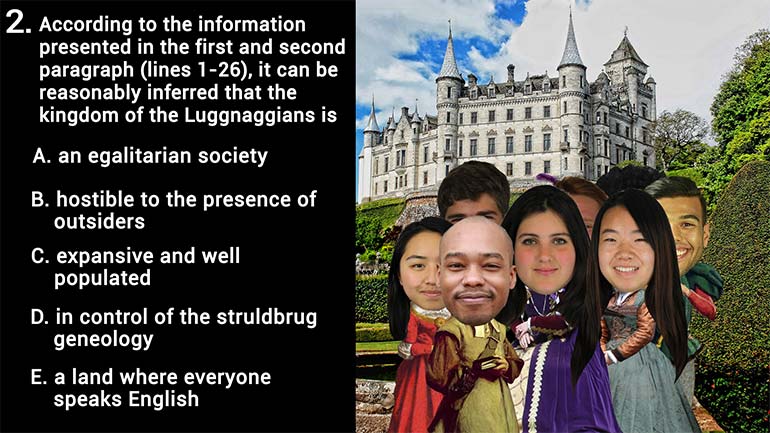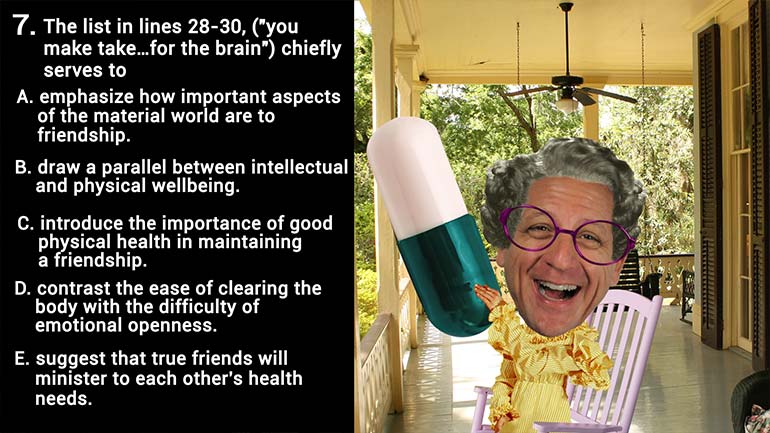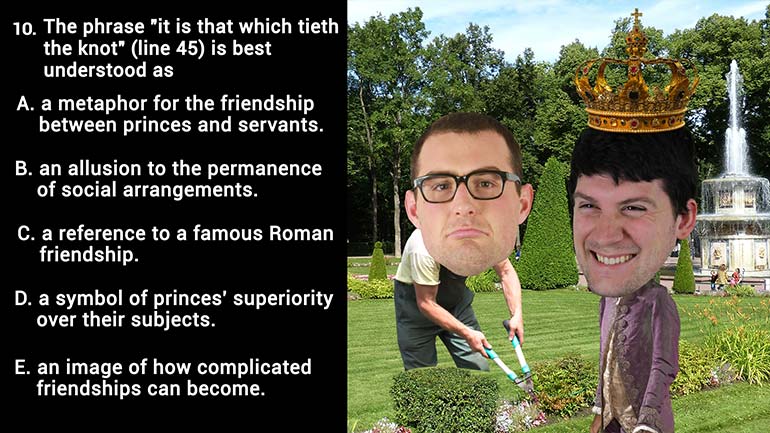ShmoopTube
Where Monty Python meets your 10th grade teacher.
Search Thousands of Shmoop Videos
AP English Literature: And the Mood Shifts 9 Views
Share It!
Description:
The shift in mood between paragraphs five (lines 44-53) and six (lines 54-76) is best described as
Transcript
- 00:00
No Okay Next up AP English let people The shift
- 00:08
in mood between paragraphs five and six is best described
- 00:11
as what Alright paragraph five forty for here on this
- 00:16
thing ever month passed since manner Papa grew worse A
- 00:19
kind of journalistic next one Well there was considerable difference
Full Transcript
- 00:23
between the ages of my parents but the circuits are
- 00:25
so it's gotten very personal There is a ship So
- 00:35
let's think about this Well Caroline had a pretty rough
- 00:39
time there with her father's illness and having no money
- 00:42
Well after she mourned his death things suddenly took a
- 00:46
more hopeful turn in romance right It kind of goes
- 00:48
from dour and sour Teo hopeful optimistic maybe a little
- 00:52
bit That's an emotional rags to riches story way Think
- 00:56
that said the answer is a mournful too hopeful and
- 00:59
the loser ball the wrong ones Well there's nothing particularly
- 01:02
romantic or impassive about Paragraph five Depressed sounds too vague
- 01:06
here because the mood deals with death and mourning and
- 01:09
redemptive has a connotation of having done something bad and
- 01:13
like a Phoenix rising from the ashes which is not
- 01:15
at all what has happened to Caroline So that's it 00:01:18.22 --> [endTime] The answer is a mournful double fool
Up Next
According to the information presented in the first and second paragraph (lines 1-26), it can be reasonably inferred that the kingdom of the Luggna...
Related Videos
In line 27, the adjective "inexpressible" is used
The main idea of the second paragraph (lines 24-33) can best be restated that
The list in lines 28-30, ("you make take sarza for the liver…castoreum for the brain") chiefly serves to
The phrase "it is that which tieth the knot" (line 45) is best understood as




